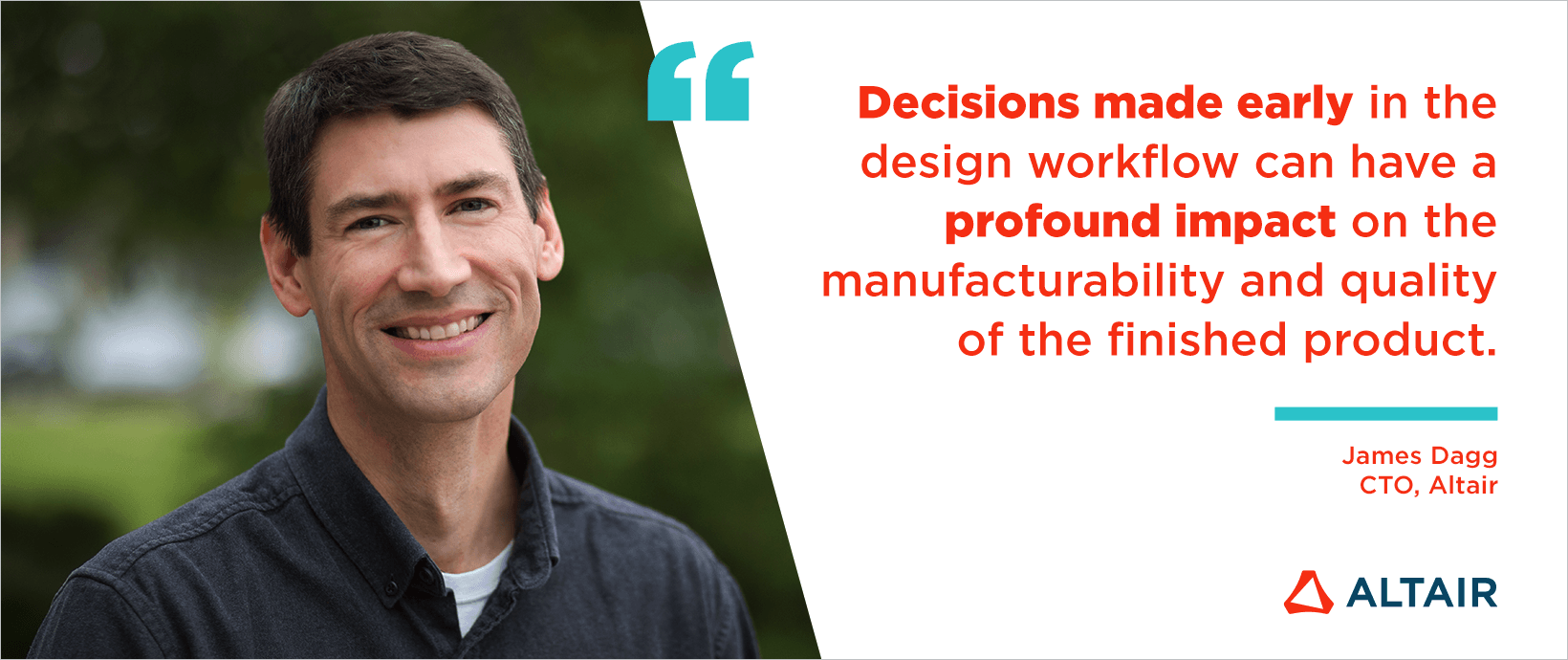Molded by Altair

No one likes making a wrong turn. And the longer it takes to realize the mistake, the more frustrating the experience.
Within the design process, an error at the outset can prove more than a minor irritation. Delays in the development program, potentially combined with the need for costly rework, can spell the difference between success and failure.
Nowhere is this more true than in injection molding. Encompassing a vast array of applications and end products, this sector now represents a $250 billion global manufacturing industry. For designers working in the field, it’s a complex process to manage. Decisions made early in the workflow can have a profound impact on the manufacturability and quality of the finished product.
To mitigate the risks, simulation is best performed early and often. That means designers aren’t wasting their time chasing issues that don’t really exist or missing the ones that might come back to haunt them. But in terms of the tools available, designers have traditionally been forced to choose between the accuracy of a 3D solver and the speed of a 2D alternative. The truth is that most injection molding projects now need both.
In true Altair fashion, Inspire Mold spells an end to the compromise. Quite simply, our new tool for injection molding hits the sweet spot for speed and accuracy. As a result, designers can simulate effectively at the earliest stage, without undermining the development schedule. Manufacturability can be established at the outset, and defects mitigated before costly investment is made in tooling. Redesign and rework are also avoided.
Inspire Mold fits perfectly with Altair’s wide portfolio and represents our expansion into a new field. Several years in development, it not only draws on our experience in simulation, but also in industry and manufacturing. What’s more, our new tool sits alongside a raft of complementary Inspire capabilities from studio to manufacturing. In Inspire, we have all the concept CAD capabilities – NURBS and polygonal modeling - plus physics simulation (structures, motion) and manufacturing processes including casting, forming, extrusion, and 3D printing.
Frankly, the user interface is awesome. Designers can pick out a part from within a full assembly in Inspire, then build the injection molding scenario around it. Every stage of the process is covered. And Inspire Mold’s solver is fully 3D.
The intuitive interface makes it genuinely democratizing; there’s no longer any need for designers to call on finite element method (FEM) expertise. Yet the functionality is rich, embracing the requirements of both part and mold design. Advanced simulation specialists will find as much value here as first timers.
All the things that make Altair tick are embedded in the DNA of Inspire Mold. Even as someone who has a close-up view of our development trajectory, it’s nice to find I can still be hugely impressed by what we are delivering for the design community. If you are involved in injection molding, check it out. It will be well worth your time.





